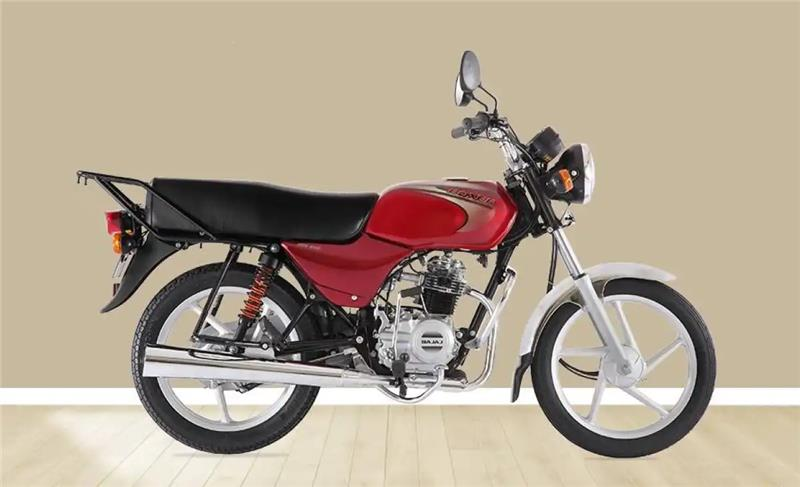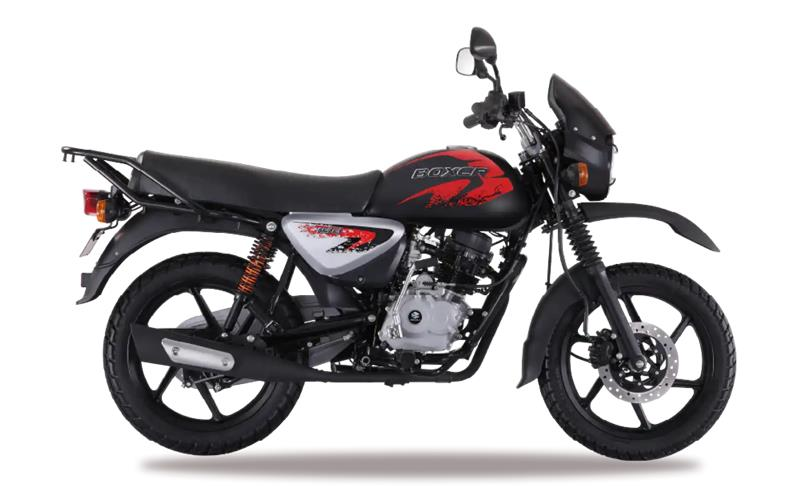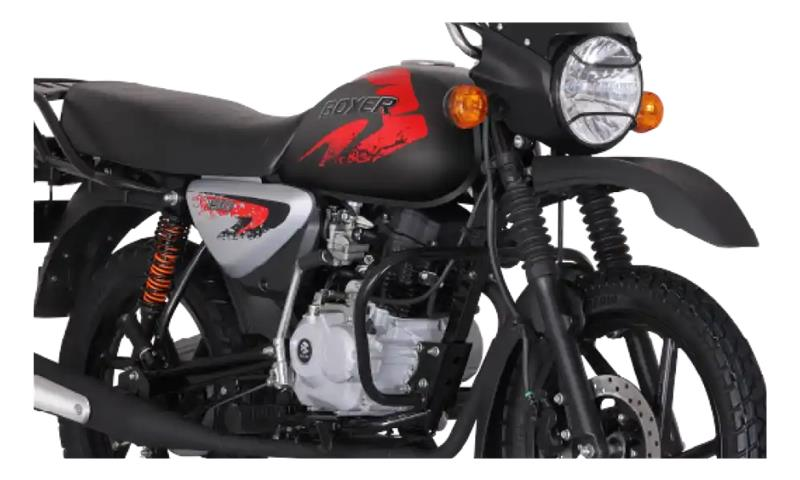
Choose your Country

Choose your Country

Kenya’s roads tell stories of hustle, hope, and survival. Every honk, every roar of an engine, and every bike weaving through traffic is part of it.
And right there, in the heart of it all, you’ll spot Bajaj bikes moving and winning the streets.
Why?
From the busy streets of Nairobi to the tough trails of rural Kisumu, life demands more from your ride. You need a bike that takes the hits, carries your dreams, and asks for little in return. That’s where Bajaj, especially the Boxer series, stands tall.
In 2025, Bajaj is set to own 12.5% of motorcycle sales and dominate 51% of Kenya’s value market share. That’s because Bajaj bikes are built for riders who are tough, ambitious, and unstoppable.
Here’s why Bajaj is the name behind the best bikes in Kenya.
Why wait? Own the roads and make your dream come true with Bajaj bikes in Kenya today!

In Kenya, where most young people are turning to self-employment, bikes open up opportunities. You can start a delivery service, get into the boda-boda business, or do freelance errands confidently with it.
A Bajaj bike is a practical investment, not just a ride. It can turn someone’s life around. Moreover, when you look at the bike prices in Kenya, Bajaj keeps them accessible to riders of all ages.
All you need is the right bike under you. The reasons you should choose Bajaj here are:
The roads in Kenya are not easy. One moment you’re cruising on perfect tarmac in Nairobi, and the next, you’re dodging potholes in rural Machakos. You need a bike that doesn’t complain, doesn’t stop, and doesn’t leave you stranded.
Bajaj bikes in Kenya, especially the Boxer series, are built to survive it all. The strong suspension swallows up bumps, stones, and broken patches without giving you a headache. The rugged frame keeps your ride stable, even when the road wants to throw you off.
Wherever you ride, be it on city streets, village paths, or rocky hillsides, your Bajaj is ready to go.
The Boxer series is designed for real-life riding. Their simple, powerful engines (from 100cc to 150cc) mean you get the right kick without draining your wallet on fuel. A heavy-duty chassis carries weight like a champion, whether you’re hauling sacks to the market or giving rides around town.
Every time you kick that engine to life, you’ll feel the strength under you. That’s why riders call it one of the best bikes in Kenya. It’s reliable, hardworking, and refuses to quit, just like you.
When you invest, you need to know you’re getting every cent’s worth back and then some.
Bajaj bikes in Kenya are some of the most pocket-friendly options out there. Not just when you buy them, but every single day you ride. It covers low maintenance, low fuel consumption, and, most importantly, affordable spare parts everywhere you go.
When you compare the bike prices in Kenya, Bajaj always makes the most sense. You spend less up front. You spend less later. And your bike stays in great shape for years.

Kenya does not offer easy roads. From the red dust of Kitui to the rain-soaked tracks of Kericho, you face everything.
This is why bikes in Kenya should feel like they have your back. Bajaj’s 4-stroke natural air-cooled engine gives you a minimum capacity of 55 kilometres per litre*. No matter where you are, your Bajaj is like a partner who is already trained for the journey ahead.
Truly, fuel prices are not getting any lighter. Every shilling saved counts, especially when you depend on your bike daily.
Bajaj bikes in Kenya are famous for their fuel efficiency. Depending on where and how you ride, you can expect only the best mileage. Even their fuel tanks range from 9.3 to 11 litres, which gives you nothing but an unstoppable ride.
Imagine how much farther you can go without thinking about the next fuel stop. If you’re choosing among the types of bikes in Kenya, fuel economy has to be a dealbreaker, and Bajaj absolutely delivers.
You deserve better than a bike that leaves you stiff and sore after an hour. Whether you are riding to work, picking up supplies, or running your boda-boda hustle, comfort is key.
The seat is broad, nicely cushioned, and positioned just right. Handlebars are placed just right so your shoulders don’t feel the strain. In a place like Nairobi, where traffic jams are part of life, you need a bike you can sit on for hours without any discomfort. Bajaj gets this right.
You don’t build a reputation overnight. Bajaj bikes are everywhere on Kenyan roads because they’ve been tested and trusted for years.
In places like Kakamega and Kisii, where rains turn roads into rivers, or in the burning heat of Turkana, these bikes keep showing up day after day, job after job. People aren’t buying them for looks or hype. They’re buying them because they work day in and day out.
Your bike should match your ambition. It should back you up when the road is rough, when the rain pours, and when the day is long. And if you’re looking for bikes in Kenya that stay strong, save you money, carry your load, and push your dreams forward, you won’t find a better partner than a Bajaj.
Out here, you don’t just need any bike. Connect with Bajaj and find the perfect bike that’s ready for your road, your life, and your goals.
The streets have already been chosen. Now it’s your move.
1. Are Bajaj bikes suitable for beginners?
Bajaj bikes are user-friendly, offering smooth handling and easy control, making them great for new riders.
2. How often should I service my Bajaj bike in Kenya?
Regular servicing every 3,000-5,000 km ensures optimal performance. Always consult your nearest Bajaj service centre for guidance.
3. Are Bajaj bikes suitable for heavy loads?
Yes, every Bajaj bike is designed for carrying heavy loads, making it ideal for work and transport needs.
4. How do I maintain my Bajaj bike in Kenya’s climate?
Frequent servicing, proper cleaning, and protecting against corrosion help maintain your Bajaj bike in Kenya’s varied climate.
One Bike, Many Jobs: How Boxer Supports Everything from Boda Boda to Agro-Deliveries
Know More
Powering Small Businesses: How Tuktuks are Driving Entrepreneurship in Nairobi and Western Kenya
Know More
The Backbone of the Rift Valley: How Motorcycles Empower Rural Kenya
Know More
5 Common Mistakes That Shorten Your Boxer’s Lifespan (And How to Avoid Them)
Know More
How the 5-Speed Gearbox Gives Boxer Riders a Real Edge in Kenya
Know More
From Shock Absorption to Frame Strength: A Deep Dive into Boxer 150 X’s Tough Build
Know More
Discovering the Significance of Three-Wheeler Tuk-tuks for Urban Accessibility in Kenya
Know More
Heavy-Duty Power for Heavy-Duty Tasks: Why the Bajaj Boxer 150 HD is a Game-Changer
Know More
How Bajaj Bikes Drive Economic Development in Kenya
Know More
Why Small Business Owners Trust the Boxer 125 HD
Know More
Maintaining Your Tuk-tuk in Kenya: Essential Tips for Longevity and Efficiency Across Regions
Know More
From 100cc to 150cc: How to Choose the Best Bajaj Boxer Range for You?
Know More
Why Tuktuks Are the Smartest Way to Deliver in Kenya’s Towns
Know More
Power That Pays Off: Why the Boxer 125 HD Is Your True Income Enabler
Know More
Understanding How the Bajaj Boxer Masters Challenging Conditions
Know More
Bajaj Boxer 100 HD ES: The Flexible Performer for Everyday Business
Know More
Mastering Your Bajaj Boxer: A Rider’s Guide to Enhanced Performance
Know More
Boxer HD Series Breakdown: Which Model Fits Your Hustle?
Know More
The Tuktuk Experience: Why Tuktuks Are Kenya’s Smartest Urban Transport Tool
Know More
The Only Bike You’ll Ever Need: How Bajaj Boxer Adapts to Any Job in Kenya
Know More
Boxer 100cc Series: The Smart Pick for Reliable, Everyday Power
Know More
Why the Boxer 125 Is the Smartest Bike for Kenya’s Boda Boda Business
Know More
Ride Rough, Stay Steady: Boxer’s Suspension System Explained
Know More
Mastering the Metropolis: Selecting the Right Motorbike for Urban Utilities
Know More
The Bajaj 150 X: The Perfect Load Carrier for Rough Roads and Long Rides
Know More
From Thika Roads to Maasai Mara Trails: Bajaj Motorcycles, Kenya's Reliable Workhorse
Know More
The Social Impact of Motorcycles in Western Kenya's Communities
Know More
Navigating Nairobi's Urban Pulse: Why Bajaj Motorcycles Are the City Rider's Choice
Know More
Why Every Delivery Rider in Town Should Be Eyeing the Boxer 125 HD
Know More
Buying a Motorcycle in Nairobi? Your Guide to Making a Smart Selection
Know More
Why the Bajaj Boxer Motorcycle is the Undisputed King of Tough Terrains
Know More
From Nairobi's Hustle to Rural Paths: The Bajaj Boxer, Kenya's Unsung Hero
Know More
Powering the Rift Valley: Why the Boxer 150cc is the Go-To for Kenyan Farmers and Traders
Know More
Which Bajaj Motorcycle is Right for Your Business in Kenya? A Comprehensive Buyer's Guide
Know More
Bajaj Three-Wheelers in Kenya: Driving Business Growth and Mobility
Know More
Bajaj vs. Competitors: Why Bajaj Dominates the Kenyan Motorcycle Market
Know More
Fuel Efficiency and Durability: The Bajaj Advantage for Kenyan Riders
Know More
Maximising Your Boxer 150's Performance and Longevity: Essential Tips
Know More
Bajaj Boxer 125 vs. Competitors: A Head-to-Head Battle for the 125cc Crown
Know More
Second-Hand vs. Brand New Bikes in Kenya: Which One Should You Buy?
Know More
A Deep Dive into the Bajaj Boxer 100 HD ES Comfort Features
Know More
Why Every Smart Driver is Upgrading to the New Bajaj RE 4S Petrol
Know More
Built to Outlast the Daily Hustle: The New RE’s Frame, Finish, and Features
Know More
Ride-Hailing at Scale? Here’s Why the RE 4S is the Backbone You Need
Know More
5 Reasons Ride-Hailing Fleets Should Switch to the New Bajaj RE 4S
Know More
5 Reasons Why Boxer Is the Best Mototaxi Bike in Kenya
Know More
What’s the Ideal Boxer Model for You? A Buyer’s Guide
Know More
A Beginner’s Guide to Boxer Motorcycle Servicing
Know More
Your First Bike? Here’s Why Boxer Is the Right Choice
Know More
Types of Motorbikes in Kenya: A Complete Guide for Buyers
Know More
How to Maintain Your Boxer Motorbike for Long-Term Use
Know More
The Economic Impact of Boxer Bikes on Village Mobility
Know More
What Makes Boxer Bikes Ideal for Agricultural Transport?
Know More
Boxer 100 Series: The Best Motorcycles for Light Commercial Use
Know More
Best Boxer Bike in Kenya for Rural Transport in 2025
Know More
Exploring the Durability of Boxer Bikes on Kenyan Roads
Know More
How Boxer Bikes Help Small Business Owners in Kenya
Know More
Why Boxer 100 HD Is the Most Fuel-Efficient Utility Bike
Know More
Why Boxer 100 HD ES Is Perfect for City and Village Use
Know More
Boxer 100 HD ES: Durability, Comfort, and Performance Combined
Know More
Maintenance Tips to Keep Your Bajaj Boxer 125 HD Running Strong
Know More
Why Mototaxi Drivers Prefer Boxer 100 KS
Know More
Choosing Between Boxer 100 KS and Boxer 100 HD: A Practical Guide
Know More
Same Spirit, Two Styles: Exploring the Boxer 100 KS and HD ES
Know More
The Boxer 100 KS: Affordable Mobility for First-Time Buyers
Know More
The Boxer 125 X: A Flexible Workhorse for All Terrains
Know More
How the Boxer 125 X Offers Flexibility for Small Businesses
Know More
How Boxer 150 HD Handles Load Like a Pro
Know More
Why the Boxer 150 HD Is a Status Symbol in Transport Circles
Know More
How Boxer 150 X Helps Mototaxi Operators Maximise Earnings
Know More
Top Features That Define the Boxer Motorcycle
Know More
The Champion of Rough Roads: Boxer 150 X Review
Know More
Why the Boxer 150 X Dominates Africa’s Toughest Terrains
Know More
How Boxer Bikes Are Powering Kenya’s Economy
Know More
Getting to Know the Heavy Duty Boxer 150cc Range: Features and Benefits
Know More
Bajaj Boxer for Heavy-Duty Tasks: Rugged, Reliable, and Ready to Roll
Know More
Boxer 150 HD: Built Tough for Long Routes and Heavy Loads
Know More
Boxer 150 HD Maintenance Tips for Rural Riders
Know More
5 Reasons the Boxer 150 X Is Built for Boda Boda
Know More